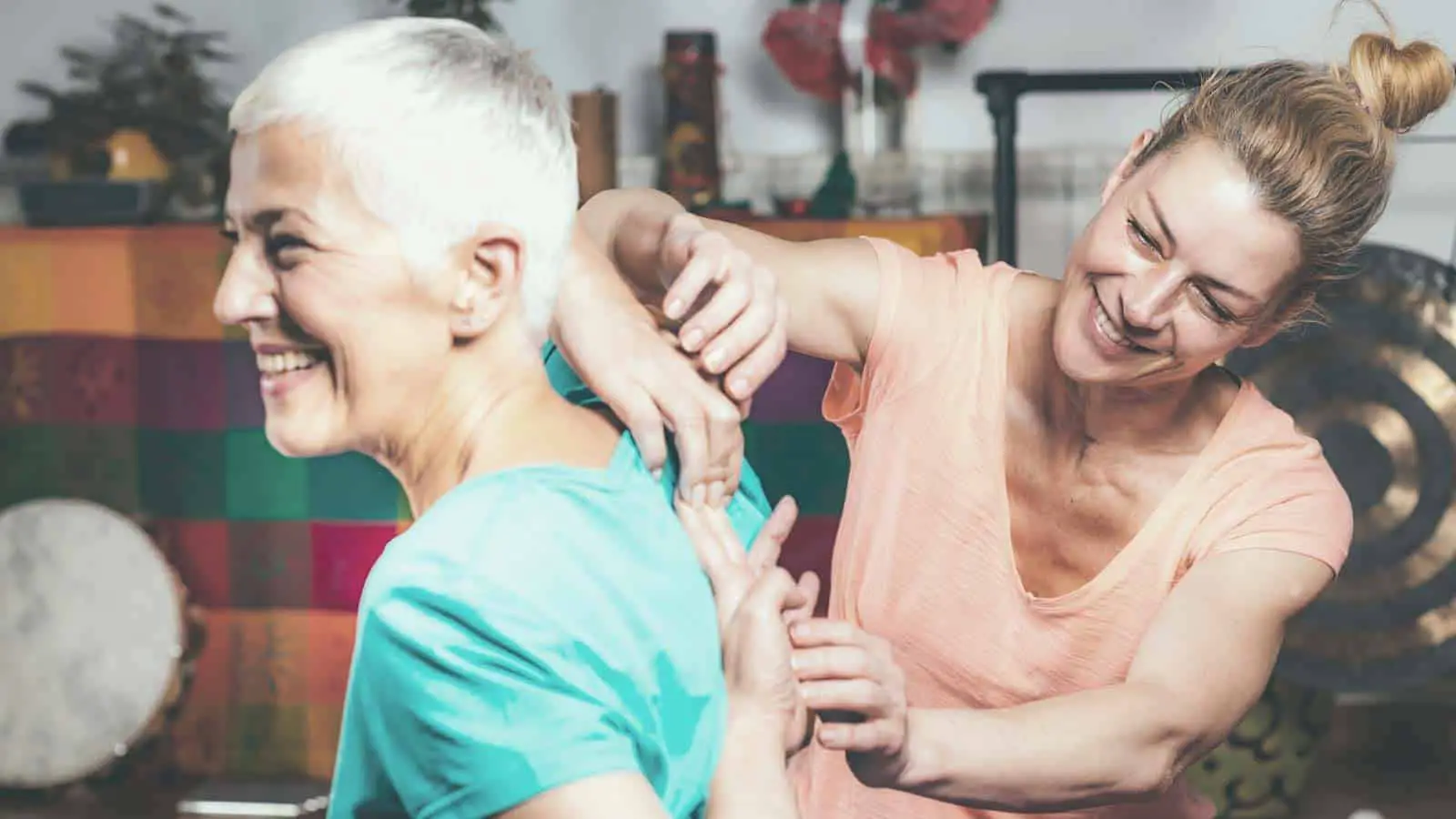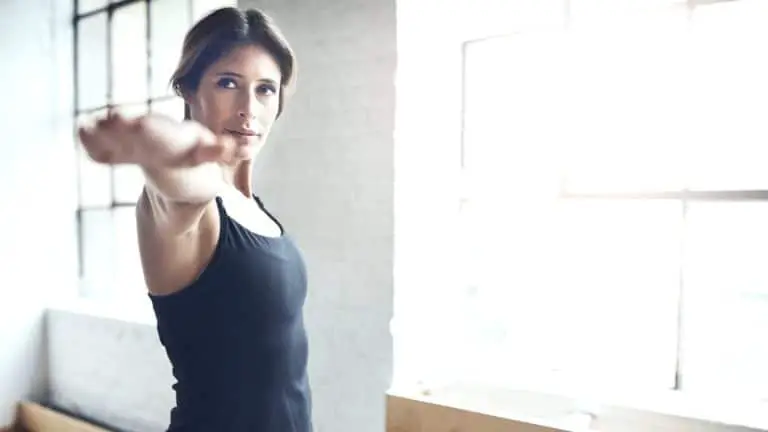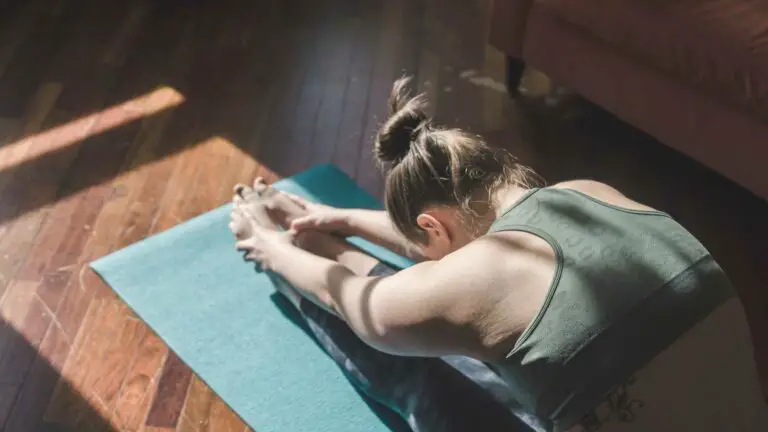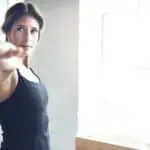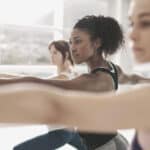If you suffer from anxiety, the good news is that any type of yoga practice will help you find your inner stillness and break the chains of anxious thoughts. Even if you can just do a few simple poses, this will have a calming effect on your body and mind. If you are looking to go deeper, you may be wondering: what are the best types of yoga for anxiety?
The three best types of yoga for anxiety are therapeutic yoga, yin yoga, and hatha yoga. These three styles of the yoga discipline offer gentler positions aimed at calmly uniting the mind and body. These are three accessible types of yoga anyone with anxiety can practice and feel their benefits.
In this article, we will take a closer look at each of these types of yoga. We will also explore a few postures to get you started, so you can begin to ease your anxiety right away. No matter which type you choose, you will be on your way to a calmer mind and a more relaxed body.
Therapeutic Yoga
What is Therapeutic Yoga?
For those who are more accepting of the mind-body connection than is typical in western talk therapy and medicine, therapeutic yoga is an excellent choice. This field of yoga is a beautiful way to work through problems while viewing the mind and body as a whole being. You will be able to discuss whatever is bothering you, like in talk therapy, while also moving the breath and body in a way that will release stored pain and emotion.
Yoga Therapy primarily focuses on the use of yoga postures, breathwork, and meditation to deal with presented issues. This could range from physical ailments like stiff joints, chronic back pain, or sore muscles. This approach can also help treat conditions like anxiety, depression, substance abuse issues, and even some types of autism in children.
However, not just every and any yoga instructor can provide this service. There are specific criteria and standards for being a yoga therapist. For therapeutic yoga, you must seek a recognized (certified) yoga therapist who will typically work with you in a one-on-one setting.
By talking with your yoga therapist and describing what is bothering you, your therapist will be able to guide you through yoga poses explicitly designed to help you in a personalized way.
The International Association of Yoga Therapists
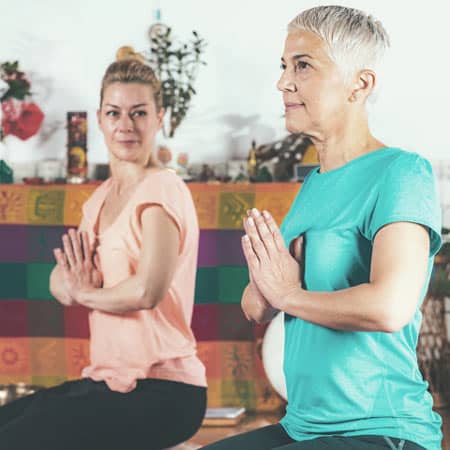
Yoga Alliance was founded in 1997 with the premise to offer national standards for the growing trend of yoga classes and yoga instruction. They established the guidelines for yoga certifications and yoga school accreditation so that there would be a consistency of yoga policies and standards across the board.
Over these past twenty years, as yoga has grown in popularity and shown to be therapeutic in many ways, another standardization agency was established: The International Association of Yoga Therapists. In 1989, this organization started to acquire research supporting the notion that yoga is a therapeutic tool. Their mission is “to establish yoga as a recognized and respected therapy.”
Further, they designed a code of ethics and laid out a scope of practice for future yoga therapists of which to abide. After several years of refinement, IAYT began certifying yoga instructors that met the qualifications of practicing yoga therapy. These “therapists” had taken further training in accredited yoga therapy training programs focusing on how asana, pranayama, meditation, and Ayurvedic medicine can be applied in a therapeutic setting.
What to expect in Yoga Therapy?
Every yoga therapist will have their own style and expertise, but here is a sample of what may occur when you pay a visit to your yoga therapist. Just like any other private therapy session, information remains confidential unless there is a risk of harm to self or others, where it would be an obligation to report.
Your yoga therapist would certainly take the time to get to know you, listen to what you’ve been experiencing, and how yoga therapy may help. If you’re experiencing stress and anxiety, you may begin your session with breathwork. This is called pranayama; it is the focus and full awareness of breath as a tool to help you reduce stress.
Breathing with intention is a mechanism that can alter your parasympathetic nervous system. That is, you can learn ways to reduce the stress response in your body with the use of breathing exercises. The two of you will practice the techniques together and allow for time to ask questions about how it feels, how it may help with stress, and how to use it at home.
Pranayama Practices
Alternate Nostril breathing and Bee breath are a few basic pranayama practices that can be used in therapeutic yoga. These can be done independently at home as well or in combination with asana practice or meditation. If you struggle to calm the mind for meditation or before falling asleep, doing a few rounds of pranayama can help immensely.
Alternate Nostril Breathing (Nadi Shodhana)
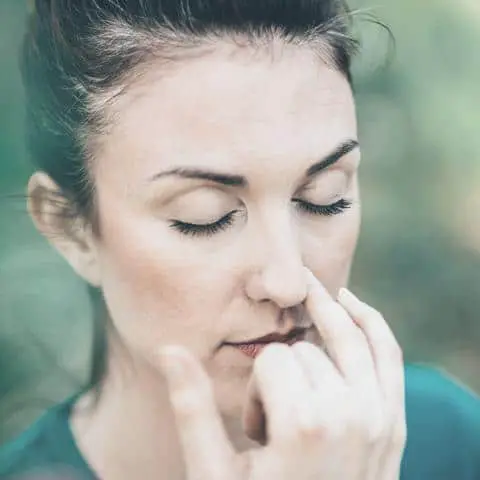
The idea behind this breathing technique is to release any blockages in the energy channels in the body. These channels or “nadis” can become blocked and cause a disturbance in the mind. By cleansing these channels with our breath, we can be more healthy and aligned and reduce our mental agitation, such as anxiety.
Even just a few minutes of practice each day will help keep your energy channels clear and help keep your mental state relaxed. To see a step by step demonstration on how to practice alternate nostril breathing, you can check the video by Art of Living.
Bee Breath (Bhramari Pranayama)
This pranayama is not only fun to practice but also has incredibly soothing benefits on your mind. Practicing this buzzing breath will help calm your nervous system to help you shift biologically in order to feel more relaxed. It will help with anxiety as well as helping to release anger and mental stress.
This pranayama involves plugging the ears with your thumbs while allowing the rest of your fingers to be placed on the face. On your exhale, you will make a deep humming sound that, with your ears plugged, will sound like the buzz of a bee. For a more in-depth demonstration of this pranayama practice, you can watch the video by Ventuno Yoga.
Benefits of Yoga Therapy
One-on-one experience
When you go to a yoga class, you can certainly experience therapeutic benefits from the guided practice. What’s special and unique about a yoga therapy session is that it is typically a one-on-one experience. It is a personal yoga lesson with your yoga therapist.
In this setting, you are able to speak directly to the yoga therapist about what is going on with you physically and emotionally. The yoga work is then personalized to fit your specific condition and state of mind.
Body-breath aspect
Yoga Therapy also adds another dimension that is often missed in traditional therapy settings. In a therapist’s office, the context and structure of the session are centered on the discussion: talk-therapy. This could be considered a one-dimensional approach to treatment that a small percentage of people relate to. That is, in talk-therapy, it is more cognitively based; it is more cerebral.
With yoga therapy, other aspects are introduced. Not only is there talking, discussing, and problem-solving, but there is also the movement of the body and a focus on the breath. For those who find it challenging to only relate and learn through verbal interaction, this treatment style offers the kinesthetic component of learning; you experience change and growth through actual movement. You feel the body in motion, which makes the changes within you more apparent. This makes it easier for you to remember what you’ve learned in your session so that you can try it outside the therapy space on your own.
Non-medical Treatment
Yoga Therapy is also a non-medical treatment. It can be considered complementary to treatments like psychotherapy or psychiatry, where medication may be prescribed. In this non-medical approach, the body and breath are used as additional resources for self-healing. For example, one may need a particular type of medication to help deal with anxiety. Adding yoga therapy to the treatment mix can teach the client how to use breathwork and meditation to help ease stress and anxiety, too.
Yoga postures in Therapeutic yoga
In regards to the asana practice, your yoga therapist may guide you through a series of yoga poses that relate directly to your stress. For example, they may ask you where in your body stress manifests. If you hold tension in your shoulders and chest, some specific yoga postures may be introduced into your session that works on these areas.
Some postures that may relate to these areas include Extended Mountain Pose, Bridge Pose, Child’s Pose, and others. The idea is to bring movement into the shoulders to help release any tension. Backbends help to open the heart and chest area to bring focus and awareness to this area. A relaxing pose, like Child’s Pose, allows for rest, release, and internal introspection to be part of the therapeutic process.
Yoga is practiced together during the session. Still, there are also opportunities for more discussion and processing so that you have a chance to talk about how these physical components help or not. As the session draws to a close, some mutual agreements on the advantage of the techniques practiced in the session are made.
Your yoga therapist may then “prescribe” some of these exercises for you to try on your own at home. These are meant to be complementary modes of treatment if you are currently on other anti-anxiety medications.
Types of Yoga for Anxiety
Yin Yoga
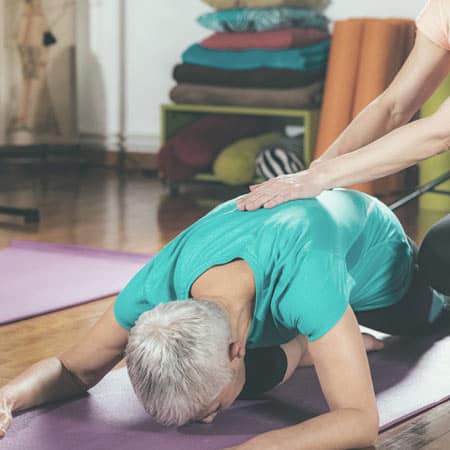
Yin Yoga, which may also be found under such names as Restorative Yoga or Gentle Yoga, is a slow-moving practice that gives you the chance to sink into each posture over a period of several minutes. This practice can be incredibly relaxing and restorative, giving both your muscles and mind a chance to heal.
As you engage with the different postures and hold them for a prolonged period of time, the idea is that you can open up blockages in your body and allow energy to flow more freely again. This kind of practice brings about all sorts of physical benefits to help you feel better in the body, such as better blood circulation and healthier connective tissue.
Yin Yoga & Anxiety
The reasons why yin yoga is a great antidote for anxiety are numerous. Simply try out a class, and you will be able to feel the difference for yourself. However, if you need a little more motivation, let’s take a look at a few reasons here.
Accessibility
Yin Yoga is excellent for those suffering from anxiety for a few reasons. First, this is a very accessible form of yoga that will not involve the cardio intensity that a vinyasa flow class might entail. This means that if someone is experiencing anxiety but does not have the foundation for the intensive asana practice of a Vinyasa class, they will be able to access the benefits of yin yoga more easily.
Accepting the Discomfort
Second, yin’s practice will help guide the practitioner with how to be with uncomfortable moments and breathe through them. Because you will hold each posture for a long duration in a yin practice, you will have the chance to deeply experience the pose, which may mean coming across some discomfort in different areas of the body.
As you breathe into these areas and accept the experience, you will be able to witness how the tensions and discomfort transform, and as they pass, only spaciousness remains. Experiencing this physically in the body is wonderful and itself, but it is also a great lesson for those plagued with anxious thoughts. If we accept the mental discomfort instead of fighting against it, we will release it and allow for a new, lighter feeling to enter.
Change of Pace
Although it will vary from class to class, it is safe to say one thing about yin yoga: it is slow. Some classes will hold poses for 2 minutes, while other classes can hold the same pose upwards of 20 minutes. Regardless of the exact minute count, yin yoga is a wonderful opportunity to drop the hurriedness of your day that can exacerbate your stress levels and anxious thinking.
By slowing down, you can experience your body with more mindfulness. By arriving in the present moment with your full attention, you will be able to ground yourself in the current experience rather than follow your anxious chains of thought into an imagined scenario of the future or the exaggerated memories of the past.
Nervous System Impact
If you are suffering from anxiety, this usually means that your sympathetic nervous system is overly active. This part of the nervous system is often referred to as the “fight or flight” mechanism. This response is one that all humans are naturally equipped for. In order to feel relief from your anxiety, it is necessary to disengage with your sympathetic nervous system and activate your parasympathetic nervous system.
When your parasympathetic nervous system is more active, you will feel more relaxed, and your body will be able to function more effectively. Luckily, yin yoga does just that – it activates your parasympathetic nervous system and disengages your sympathetic nervous system. Not only will you feel deeply relaxed and calm by the end of your yin yoga class, but deep down, your body will be running at its best.
Beginner Yin Yoga Poses
Let’s take a look at a few classic yin yoga poses to get you started with this calming practice today. Using blocks or bolsters is quite common in yin classes as you want to be sure you are comfortable as you will stay in each pose for quite a while. As you continue to breathe in each position, you will naturally sink deeper and may no longer require the use of props by the end of the pose.
Butterfly Pose (Baddha Konasana)
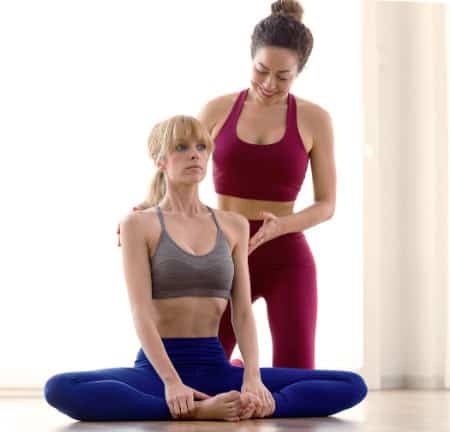
Sitting briefly in Butterfly Pose is part of many yoga classes, no matter the type or the tradition. However, as you come to this sitting position during your yin practice, it is a great opportunity to explore it in a new way. Spend 3 -5 minutes in this position, exploring it in a way you didn’t have the chance to previously.
Sitting with the soles of your feet together in front of you, you will take this pose a bit further by folding forward, allowing your head to go towards your feet as you allow your back to gently round. If it is uncomfortable at first, consider placing a prop between your feet and forehead to offer you extra support as you explore this posture. Additionally, you can sit on a block or blanket to allow you more room to fold forward.
This posture is great for a variety of reasons. It is a great way to stretch out and release tension from your inner thighs, groin, outer hips as well as your spine. It will help bring better circulation to your lower body, which is very much needed if you have spent a lot of time sitting during the day.
Lizard Pose (Utthan Pristhasana)
This beautiful hip opener is a great chance to release stored emotions and create spaciousness in your hips. By taking the time to breathe into the tension in your hips and create more openness, you will be taking care of different areas all around your body. Healthy hip joints will impact the health of the knee joints and can also help alleviate back pain.
That being said, Lizard Pose can be intense for those who are new to the yoga practice. Traditionally this pose involves coming down onto the forearms, but this may be unavailable to those with tighter hips. You will want to find a comfortable variation as you will spend 3 -5 minutes in this posture. You can try holding this pose with your arms straight or with a block between the ground and your forearms.
Either way, remember the key to holding the pose is your breath. Opening the hips can release old tensions and emotions, and staying with your breath through the posture will carry you through the experience. It’s good to remain present with slight discomfort but remember to listen to your body and back off a bit if you think you are pushing yourself too far.
Banana Pose (Bananasana)
This lovely pose can be done at the beginning or end of any yin practice to the great joy of the practitioner. As you lay on your back and take the shape of a banana, you give yourself a wonderful side body stretch that will feel amazing and give you a chance to stretch out the muscles around your waist.
This pose can be practiced on both sides of your body for 4-5 minutes each. This highly relaxing pose is a great pose to do before moving into savasana. This pose can be done to transition from your busy day into your practice or to transition from the active portion of your practice to the final resting phase.
Hatha Yoga
Hatha Yoga is one of the most widely practiced forms of yoga globally, and certainly in the West. A Hatha class will be calmer than an intensive vinyasa or ashtanga class and incorporate breathing and meditation into the practice. When you think of a classic, beginner-friendly yoga class, this is usually modeled after the traditional Hatha practice.
In a Hatha Class, you may hold each position for 4-6 breaths. While this is much shorter than the minutes-long holds in yin yoga, this is still considerably longer than a Vinyasa class. Hatha will allow you to work through traditional yoga flows while still having the time to fully experience each posture.
Because Hatha Yoga is a prominent and popular branch of yoga, many studies have been done about the practice and its effect on mental and physical health. Let’s take a look at the positive effects this type of practice can have.
Hatha Yoga and Anxiety
Hatha Yoga is more than just the physical postures. It incorporates different elements that come together to support you in multiple ways as you look to better your physical and mental health. The pranayama and meditation that is a part of this practice also support those suffering from anxiety.
Better Sleep
Practicing hatha yoga has a wide range of physical benefits, from improving your balance to aiding your back pain. However, one particular physical benefit that will appeal to those who suffer from anxiety is to sleep better. For anyone with anxiety, trying to fall asleep at night can be a peak of anxious thinking and can often prevent a good night’s sleep.
By practicing hatha yoga during your day (not necessarily even at night), you can experience the joy of falling asleep more quickly and sleeping more soundly throughout the night. This can help you wake up more energized the next morning and help with this forward surge of energy to continue practicing yoga and continue in this upward spiral.
Holistic Approach
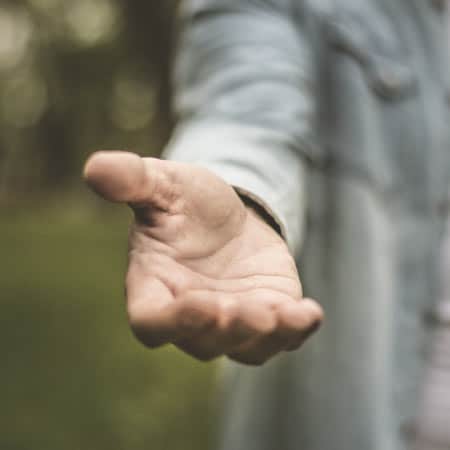
Hatha yoga includes the asana practice, pranayama practice (breathing exercises) as well as meditation. The breathing that will keep you present during your practice and the meditation that allows you to travel within are equally as important as the asana component. By practicing these three components together, you are rewiring both your body and mind in their stress responses.
By practicing daily, you are not only giving yourself a routine chance to free yourself of accumulating stress and tension, but you are doing the maintenance work to keep you calm in your time off of the mat. Hatha yoga can be a beautiful accumulative practice that is more than just an exercise, but a new way of approaching life and the anxiety that comes with it.
All three of these components can help flush negativity and stress from your body and mind. The continued practice may even lead you to other components of yoga, such as some of the deeper philosophy behind the practices.
This exploration may allow you to practice new habits like eating more nutritious food and spending your time helping others. These lifestyle changes can also have a positive influence on your mental state and level of anxiety.
Beginner Hatha Yoga Poses
Hatha has plenty of poses that are beginner-friendly that will help you settle in, calm your mind, and reduce your anxiety. Let’s take a look at how to get started.
Standing Forward Bend (Uttanasana)
This forward fold is a pose you will encounter countless times as you continue your yoga practice. It is always a great chance to open your hamstrings, stretch out your back and spine while allowing your head to relax as it lowers to the ground. It is a position that will enable your head to be below your heart, meaning that your typical blood flow will be redirected, causing fresh circulation patterns.
Breathing deeply in this position will help release the stress and tension you are carrying in your back and spine and allow your mind to calm and your nerves to relax. Staying relaxed in this position will allow your anxiety and depression to melt away.
You can practice this position at any time, starting from a standing position and simply bending forward. The fold will come from bringing your stomach in and allowing your body to fold down to the ground. You can let your hands gently reach toward the earth or grasp opposite elbows, letting yourself grow heavy in this position.
Head to Knee Forward Bend (Janu Sirsasana)
Bringing your head to your knee in this classic sitting forward bend is an incredibly calming and soothing posture. This pose is known to relieve anxiety and calm the unnecessary chatter in the brain. This pose also gives you a chance to stretch out your spine and shoulders, allowing you to release any tension you have been carrying during the day that could be exacerbating your anxiety.
Janu Sirasana is a great forward bend for beginners since it allows you to engage with one leg at a time. This pose will give you the chance to breathe deeply into any discomfort you feel in the back of your leg, allowing you to become deeper acquainted with how your muscles feel individually. Taking your time and moving through this posture on each side with care will help your physical and mental health and help you grow your body awareness.
Downward-Facing Dog (Adho Mukha Svanasana)
One of the best-known poses in yoga is the downward-facing dog. This asana is one that you will arrive at countless times as you continue your practice. It’s for a good reason, as well. This pose is full of many benefits and among these is the ability to calm anxiety.
A downward-facing dog is an inverted position where your heart is above your head, meaning that blood can flow to your head in a way it does not usually get to do when standing up straight. This will give you a rush of energy, wash away tension, and help your anxiety fade into the background.
You can practice downward dog on its own or as part of a hatha yoga flow. If you practice Sun Salutations, you will naturally arrive in downward dog in each cycle. Remember to spend a few breaths here, enjoying and relaxing into the pose.
Additional Yogic Tips for Anxiety
Now that we know the top 3 types of yoga that can help with your anxiety let’s take a few additional tips to help you in this process.
Pranayama, Asana, and Meditation
Especially as yoga has come to the West, it is easy to think of yoga as just the physical asana practice. And while these asanas offer great benefits, combining this practice with the other aspects of the yogic lifestyle is very important.
As you explore a new asana practice, remember to incorporate some pranayama and meditation as well. This combination will support you in your journey to calm your mind and alleviate your anxiety.
Follow Your Creativity
Whether you like to paint or play an instrument, allow your creative energy a place to be used. Creating can be a very transformative experience, where excess nervous energy can be transformed into a powerful creative force. Whatever you are making doesn’t have to be any good– it simply has to be something you are enthusiastic about.
Allow yourself to be playful and think of this time to connect to a different side of you that needs to be expressed. Remain present with yourself throughout the activity and observe how it makes you feel.
Explore Ayurveda
Many yogis find themselves exploring Ayurvedic medicine at some point in their yoga journey. This ancient healing system originating in India offers natural and holistic ways of approaching problems. The foundational principles of Ayurveda can help you to rethink how you are consuming foods and focus more on your digestive power.
There are many Ayurvedic doctors available if you take an interest in this healing system and wish to have a private consultation. They can help you better understand your natural constitution and any issues you might be experiencing. Ayurveda focuses on finding the root cause as opposed to treating the symptom.
Final Thoughts
Anxiety can be challenging to live with when you don’t know how to use your body’s natural power to free yourself from these thinking patterns. By practicing the types of yoga we have seen here, you will be able to naturally shift your biological functions to support a healthier mental state. It will help you break your anxious chains of thought through presence while activating your parasympathetic nervous system to help you find calm on the biological level.

